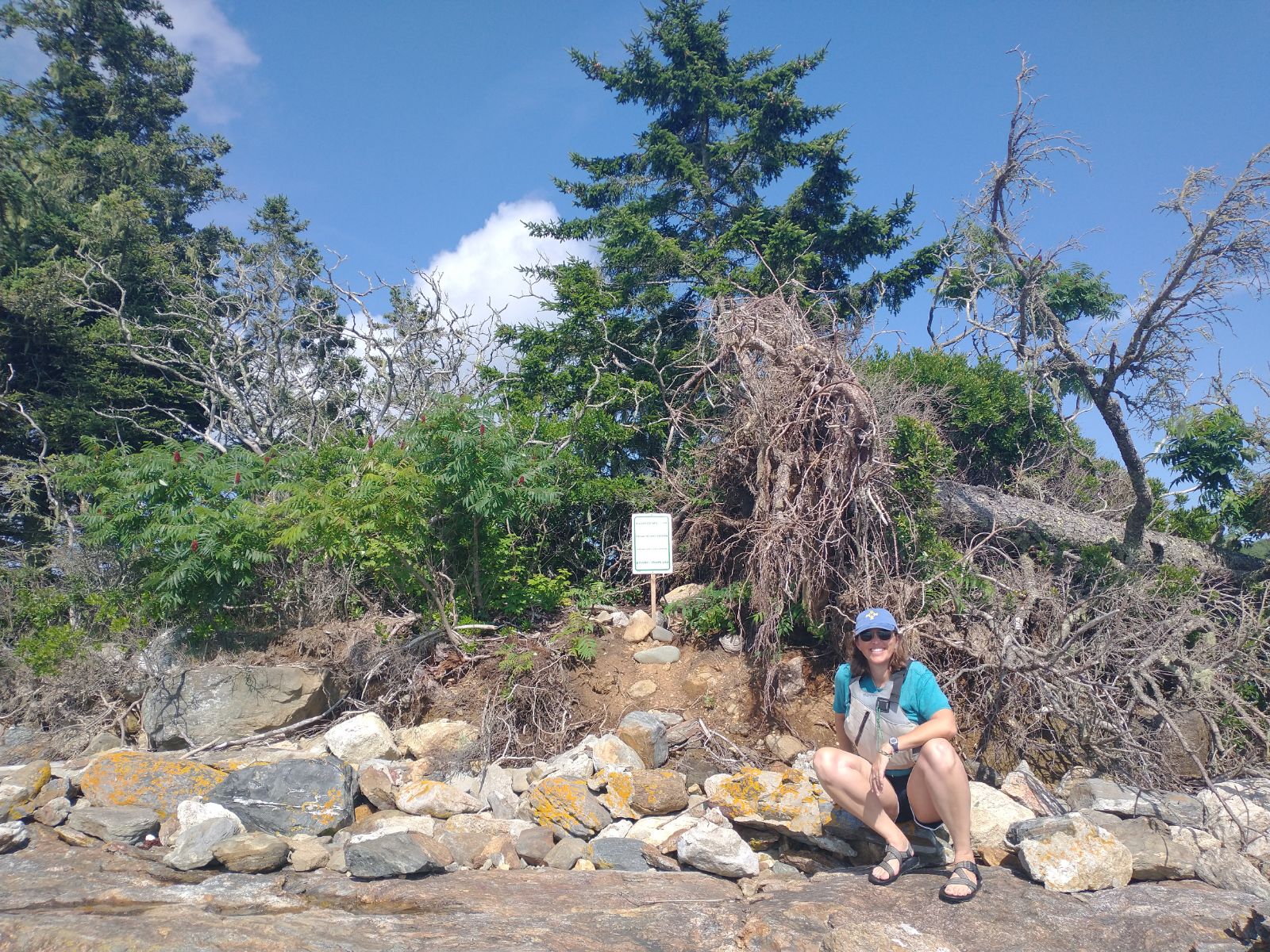
I am taking a break this week from talking about the Gulf of Mexico to spend a few minutes talking about my summer family travel to another gulf, the Gulf of Maine. Like the Gulf of Mexico, the Gulf of Maine is experiencing rapid environmental change driven by climate change.
The geography of the region, the shape of the ocean floor, and the interplay of two major ocean currents – the Gulf Stream and the Labrador Current – all affect the water temperature in the Gulf of Maine. In recent decades, climate change has changed the speed and strength of these two currents, making the Gulf of Maine one of the fastest warming bodies of water on the planet.
Visiting the same patch of coastline every summer over the past forty plus years has given me a vantage point to observe changes in the environment.
When I was a child, the ocean was so cold that you could only stay in for a second or two before the pins and needles feeling forced you out. This week, my own children got in the water shortly after breakfast and stayed in through lunch.
When I was a young child, I ran to the sea wall during the highest tides of the year, the “spring tides,” to see if the water would reach the bottom of the sea wall. Unless there was a storm, it never did. This year, even in clear conditions, water was an inch deep along the sea wall at each high tide.
Sea level in the region has risen seven to eight inches over the past century. But even more worrying, over the past three decades, the rate at which sea level is rising has accelerated from 1.8 mm/year to 3.2 mm/year.
Sea level rise is insidious, the change imperceptible year to year, but adding up to major change over time. Along the way it enhances erosion and flooding, especially during storms. A nor’easter struck the southern Maine coastline in January of this year and the consequences of all those extra millimeters of sea level that have accumulated in the last century devastated the Maine coastline.
A coastal road was scraped off the ground and thrown further inland. Coastal businesses and homes were flooded and destroyed. A bell house at the historic Pemaquid lighthouse, which has stood high on a rocky cliff for nearly two hundred years, was badly damaged by twenty foot waves and hurricane force winds.
The impacts from this violent storm became more personal when I paddled with my family out to a tiny island in the bay. The uninhabited island sits in protected water. It has a long flat beach on one side and a high rocky point on the other side covered in spruce trees.
It’s a place my family has visited each year. We have family pictures of chubby toddlers wading in the shallow water, preschoolers climbing up the rocks, and primary school kids exploring the little forest.
When we arrived this summer, we found a sign warning of damage to the island due to erosion. When we walked around to the far side of the island, which faces the prevailing southwesterly wind, we saw what they were talking about. A giant root ball stood, exposed. The tree arching back into the woods. Huge chunks of ancient Maine granite that were pulled away from the island by the waves and the roots of the tree lay in a pile on the beach.
Texans are familiar with beach erosion, with our sandy, marshy coastlines and ephemeral barrier islands. But in Maine, much of the coastline is solid rock that has stood in the same place for centuries.
Erosion is not the only threat to the region. According to the Gulf of Maine Research Institute, “over the last 30 years, the Gulf of Maine warmed at a rate of 0.06°C per year (0.11°F per year) — more than three times the global average. Over the last 15 years, this region has warmed at more than seven times the global average rate. At both time scales, the Gulf of Maine warmed faster than 99% of the global ocean.”
Marine heat waves kill some species and cause others to migrate to cooler waters. Large predators like great white sharks expand their range further north, putting pressure on the seal population. Species like the invasive green crab, which can resist temperature changes dominate the ocean floor as less flexible native species like sea urchins and starfish migrate or die off.
Disruptions to ecosystems like these cause a cascade of impacts as relationships between predators and prey and food sources like aquatic plants and plankton become unbalanced. All of this adds up to trouble for the fishing industry, on which much of the Gulf of Maine’s economy rests.
The image of the Maine lobsterman feels as permanent as the granite rocks that line the coast, but every year it feels like there are fewer and fewer lobster buoys in the bay my family visits.
We feel a deep sense of loss when we see climate impacts change places we hold as sacred. But just as ocean waves can weather away one tiny particle of granite at a time until a whole cliffside falls into the sea, our small actions in advocating for climate change mitigation – our votes, our letters, our testimony, our conversations, and our prayers – collectively, with persistence over time, can bring about massive change.
